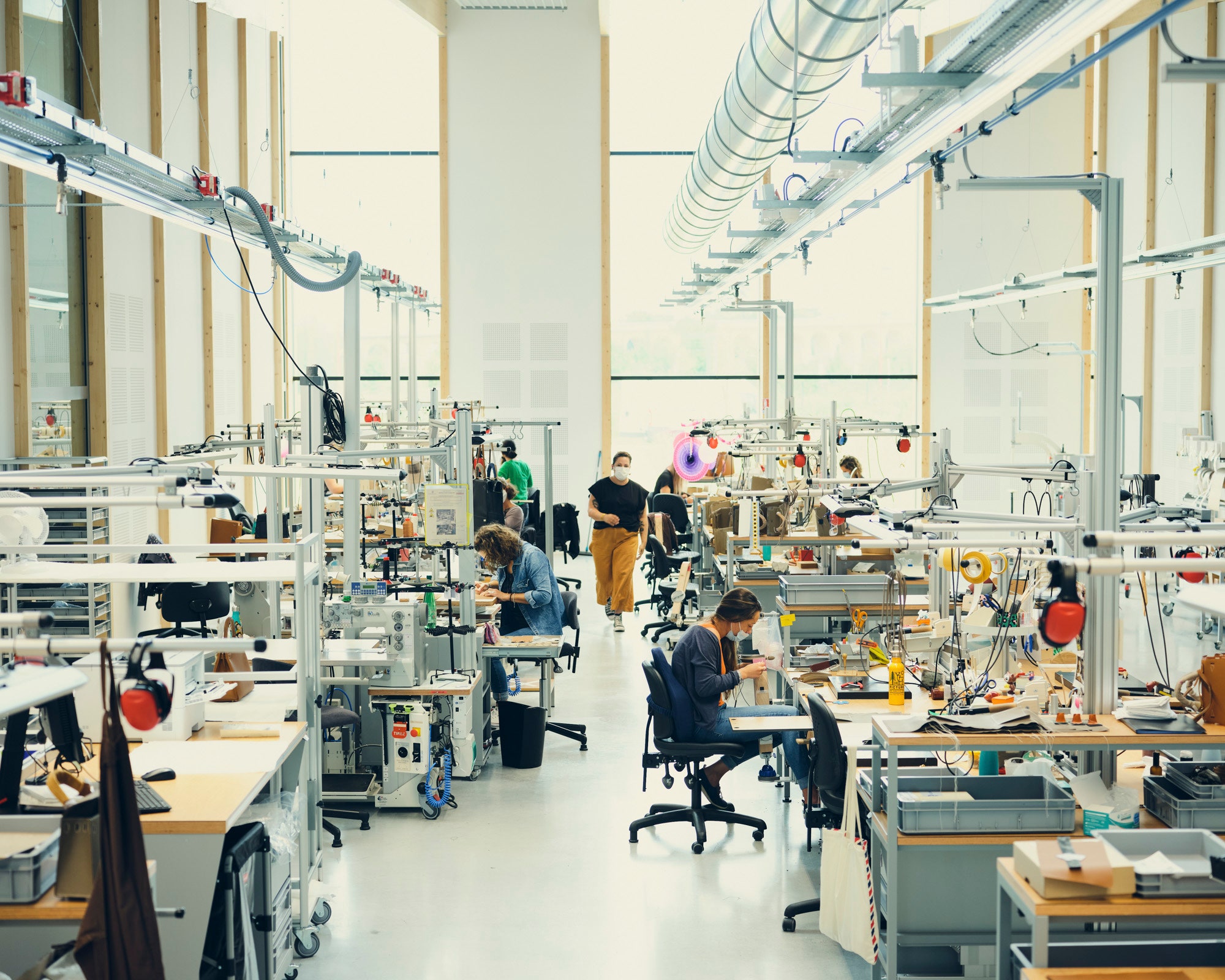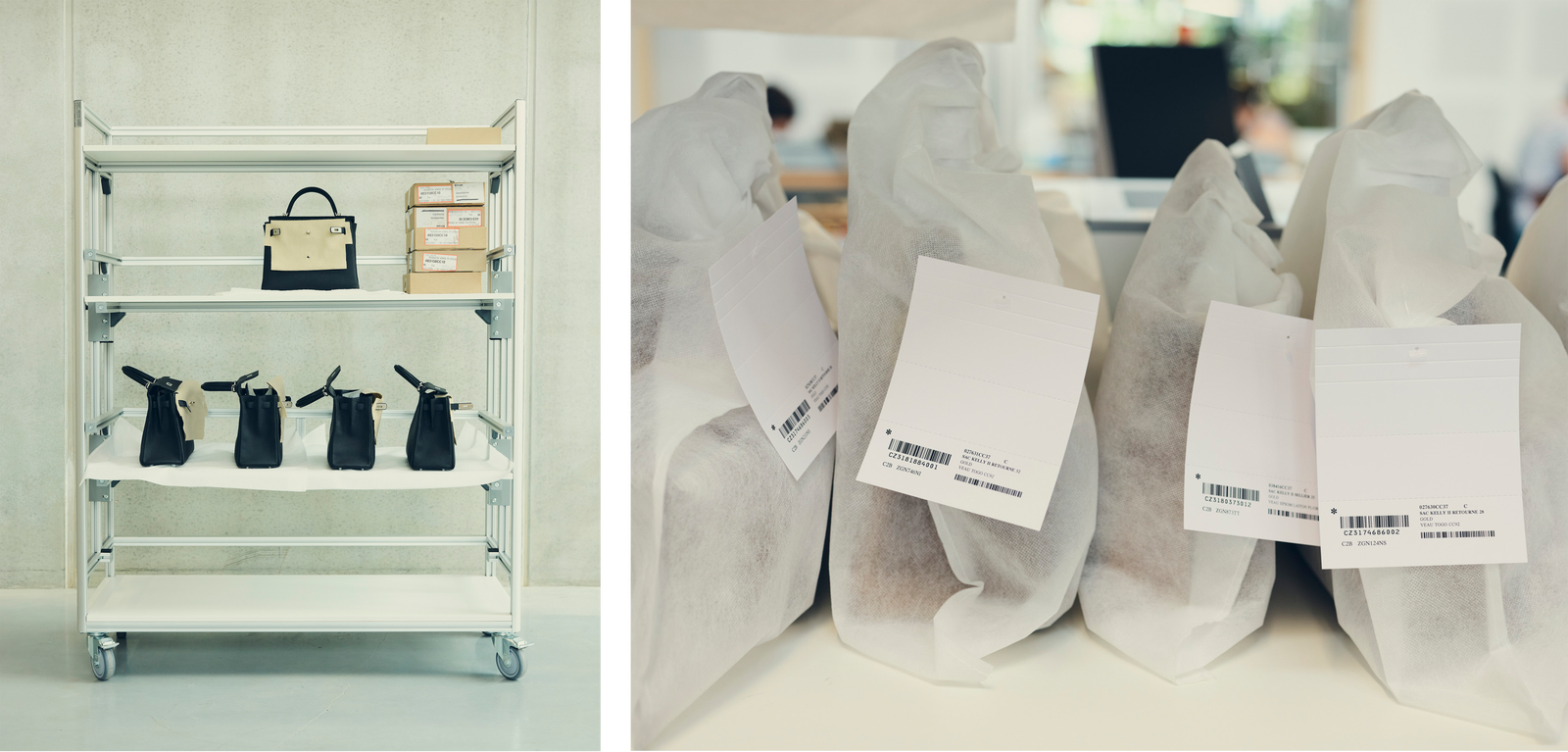
Inside the Hermès Workshop That Makes Its Iconic Bags
At the new Hermès workshop in Saint-Vincent-de-Paul, France, the Kelly serves as a training ground for freshly minted leather artisans.

There is a kind of fashion object so long-lasting, so tirelessly wanted that its name becomes recognizable, a metonym for the brand that made it: the Air Jordan, the Love bracelet. Few brands, successful though they may be, attain that kind of saturation. Hermès has done it twice: the Birkin and, arguably the first of the household-name phenomena, the Kelly. Originally designed in the 1930s as the Petit sac haut, à courroie, simplifié, the Kelly was rechristened after the newly crowned Princess Grace was photographed, in 1956, clutching it to conceal her early pregnancy; the image appeared on the cover of Life magazine.

But in the Hermès artisan workshops, the vaunted bag isn’t a waiting list status symbol, it’s an education: Usually the first item newly minted leather artisans construct, it serves as a leatherwork 101. “The Kelly bag is one of the most complex bags we have in terms of our savoir faire, or know-how, which is really based on the tradition of saddlery and harnesses,” says Olivier Fournier, executive vice president of compliance and organization development at Hermès International, who oversees the company’s sustainable development. With its crisp top flap, shoulder strap, and ladylike single handle (the most easily spotted differentiating feature from the double-handled Birkin), it requires 36 pieces of leather, a handful of metal parts, and 15 to 20 hours for one artisan to complete. Mastery of the Kelly means mastery over virtually every other Hermès bag design.

Buckles and other hardware are attached by hand.PHOTOGRAPH BY CYRIL ZANNETTACCI.

Indeed, at Hermès so much depends upon a single stitch, taut and tensile, with almost 200 years of tradition. And if each stitch represents a sentence in Hermès’s history, which began when the German-born harness maker Thierry Hermès founded the company in Paris in 1837, then its manufacturing workshops are the grammar guiding their syntax. These workshops—of which there are 51 in France alone, each dedicated to women’s ready-to-wear, perfume, shoes, jewelry, menswear, silk, or home furnishings—are spaces where standards and techniques are passed down and preserved.


The leather workshops can be traced to 24 rue du Faubourg Saint-Honoré, where Thierry Hermès’s only son, Charles-Émile, opened its flagship store in 1880. The first location outside of Paris opened near Lyon more than 100 years later, in 1989, and the next site came in Pantin in 1992. (All brands self-reference, but Hermès’s version is particularly cyclic; artistic director of women’s ready-to-wear Nadège Vanhee-Cybulski showed a poncho in her spring 2019 collection with a waistline based on the aprons worn at the Pantin site).

“Every single gesture has its importance,” says one Hermes artisan. “It requires constant concentration so as to not miss anything.”PHOTOGRAPH BY CYRIL ZANNETTACCI.

“We have stuck for centuries now to a craftsmanship model because we strongly believe that to have the quality and the durability we want in our leather goods, we need this artisan approach,” explains Fournier. The company maxim, “Luxury is that which can be repaired” (set forth by former CEO Robert Dumas-Hermès), comes to life at the workshops as well: Each year, at 15 dedicated repair shops worldwide, Hermès mends up to 120,000 of its own pieces, from a worn shoulder strap to a decades-old saddle; on rare occasions an artisan might even fix a handbag they crafted more than 30 years prior.

“Craftsmanship is based on transmission,” Fournier says. With every new workshop opening, a handful of the house’s 80 master trainers—a position that requires eight years of work at Hermès to attain—travel to teach a new generation of artisans. It’s a demanding pedagogy, one that takes 18 months to complete and happens in two phases: The first is verbal, and the second is “at the bench,” when artisans apply their new learnings under the watchful eyes of one of 200 designated mentors.

At Saint-Vincent-de-Paul, each artisan—many of whom are locals hired through vocational schools and employment offices, often with little experience in leatherwork—uses more than a dozen tools but soon learns that the meticulous attention to detail inherent in an Hermès objet begins with their body. On any given morning, groups of artisans can be found flexing their toes, swaying their arms, and bending their knees, the workshop appearing more like a class for modern dance than a lesson in leatherwork. “Every single gesture has its importance,” says Emilie. “It requires constant concentration so as to not miss anything.” The angle of the hips, the lean of the torso, the pressure of the hands—all affect the final aesthetic outcome.
Despite this staunch adherence to tradition, Hermès will introduce a decidedly modern material this fall: mycelium leather. Developed in collaboration with the San Francisco-based biotech company MycoWorks, this “Fine Mycelium,” coined Sylvania by its creators, derives not from cattle but from mushrooms. Fournier insists that its quality and durability meet the same high standards of traditional leathers and that the material continues Hermès’s long legacy of innovation—it was, after all, Thierry’s grandson Émile-Maurice Hermès who introduced the zipper to handbags in 1922.





